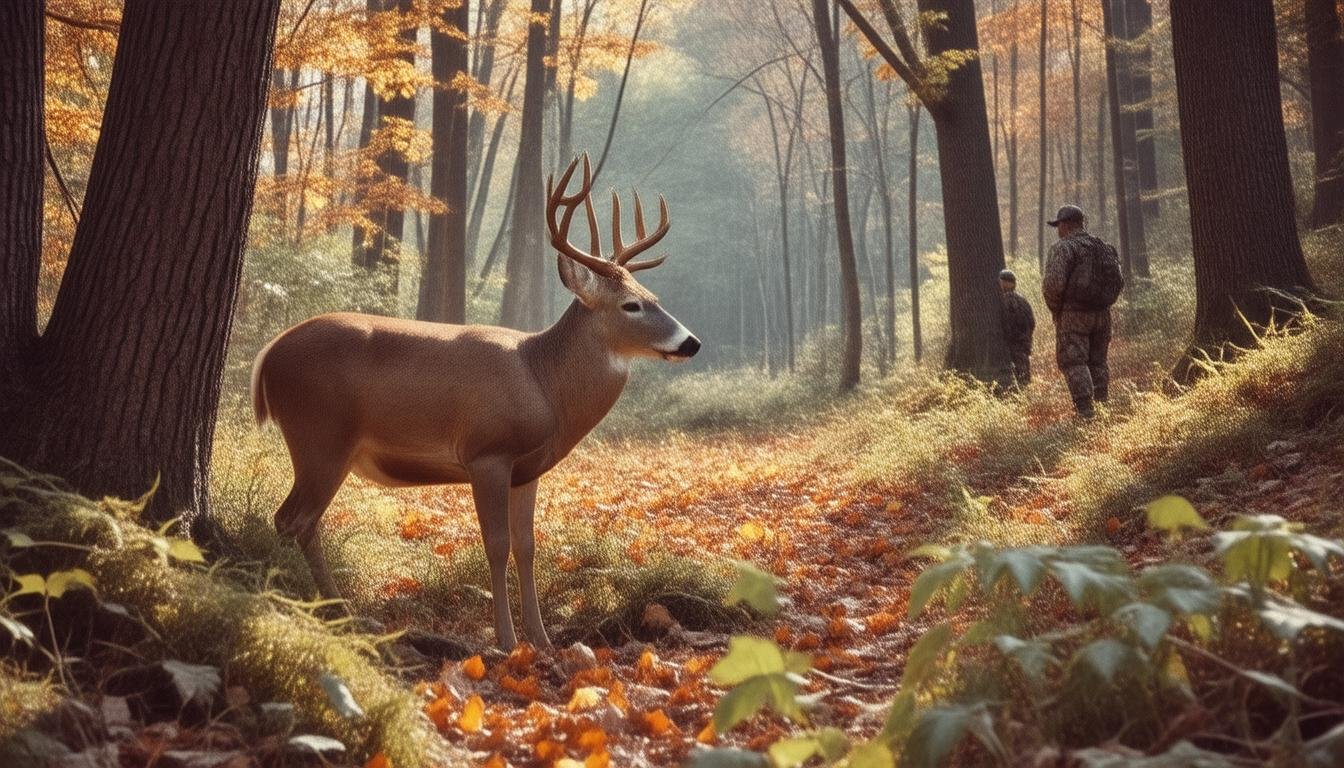As deer hunting enthusiasts gear up for the upcoming seasons, the recently released 2025 Deer Report by the National Deer Association unveils critical insights into whitetail buck harvest trends.
This comprehensive analysis of harvest data offers both seasoned hunters and newcomers valuable information about the deer population and hunting dynamics across North America.
From record-setting harvest statistics to successful hunting strategies tailored to specific regions, understanding these trends is essential for maximizing your hunting experience and contributing to sustainable deer management.
Key Takeaways
- Whitetail deer are vital for the North American hunting industry, both ecologically and economically.
- The 2023 harvest of over 3 million bucks indicates effective deer management strategies at work.
- Certain states show remarkable increases in hunter success rates and buck harvest density, reflecting regional variations in deer populations.
Current Trends in Whitetail Buck Harvest
### Current Trends in Whitetail Buck Harvest
Whitetail deer are the most commonly hunted game species across North America, playing a pivotal role in both the ecology and economy of the region.
According to the National Deer Association’s 2025 Deer Report, new harvest statistics indicate that in 2023, a staggering 3,086,182 whitetail bucks were harvested in key regions including the southeastern, northeastern, and midwestern U.S.
This number climbs to 3,207,109 when counting the western states, underscoring a successful hunting season that reflects both effective deer management practices and a healthy population of whitetails.
Historically, this marks a high point with over three million antlered bucks harvested, highlighting the importance of sustainable practices in maintaining whitetail populations.
Among the states, Texas emerged as the frontrunner with an impressive 424,892 bucks harvested, followed by Michigan, Pennsylvania, Wisconsin, and Missouri.
Notably, Pennsylvania leads in terms of harvest density at
3.8 bucks per square mile, followed closely by Michigan and Maryland.
In terms of hunter success rates, southern states proved particularly fertile, with South Carolina at the top, boasting a remarkable 73% success rate.
Year-over-year comparisons reveal trends of growth as well, with states like Louisiana and Rhode Island witnessing significant increases in their antlered buck harvests compared to five-year averages.
These insights not only provide valuable information for deer hunters but also reflect the broader health and management of deer populations across North America.
Regional Analysis of Harvest Success Rates
The regional analysis of harvest success rates for whitetail deer reveals critical insights for hunters and wildlife managers alike.
The data from the National Deer Association’s 2025 Deer Report shows that different states within the U.S.
exhibit varying levels of success when it comes to hunting these iconic game animals.
For instance, while Texas maintains its status as the top state for overall harvest numbers, the per-square-mile statistics highlight Pennsylvania’s exceptional performance, pointing to both abundant deer populations and hunter effectiveness in the area.
Not only do these metrics inform future hunting strategies for individuals looking to improve their chances during the season, but they also underscore the significance of tailored management practices that account for regional conditions.
Furthermore, the variations in hunter success rates across states suggest that environmental factors, local regulations, and access to hunting lands play crucial roles in the pursuit’s outcomes.
Understanding these dynamics is essential for the sustainable management of whitetail deer populations nationwide.










